Washington, D.C. – New revelations confirm that the Bureau of Alcohol, Tobacco, Firearms, and Explosives (ATF) has been utilizing facial recognition technology to identify gun owners, sparking alarm among civil liberties advocates and Second Amendment supporters.
The controversy first surfaced following the July 13, 2024, attempted assassination of former President Donald Trump in Butler, Pennsylvania. Shortly after, an FBI preliminary report released by Senator Ron Johnson revealed that law enforcement sent photos of the shooter, Thomas Matthew Crooks, to the ATF for facial recognition purposes. This revelation has led to renewed scrutiny of the agency’s involvement in biometric surveillance.
ATF’s Facial Recognition Program Exposed
According to a 2021 Government Accountability Office (GAO) report, the ATF has access to various facial recognition systems, including Clearview AI, Vigilant Solutions, and databases maintained by federal, state, and local law enforcement agencies. These systems allow authorities to compare facial images against a database of billions of online photos, including images scraped from social media, news sites, and mugshot databases.
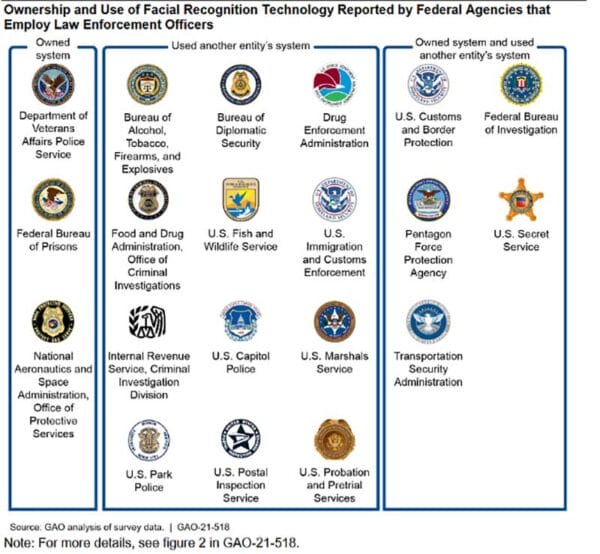
Gun Owners of America (GOA), has raised concerns that the ATF could use this technology to identify law-abiding gun owners. A previous GAO report found that the ATF conducted at least 549 facial recognition searches between October 2019 and March 2022, but agency officials later claimed to have halted the practice as of April 2023.
However, recent events suggest otherwise.
AmmoLand News Puts Pressure on ATF
In 2024, AmmoLand News worked to get the ATF on record regarding its use of facial recognition technology. Through investigative reporting and direct inquiries, AmmoLand pressed the agency for answers on how it was using biometric data and whether this technology was being integrated with ATF’s already extensive firearm transaction records. The publication’s efforts, alongside scrutiny from Senator Ron Johnson’s office, helped uncover that the ATF continued using facial recognition despite prior claims to have ceased the practice.
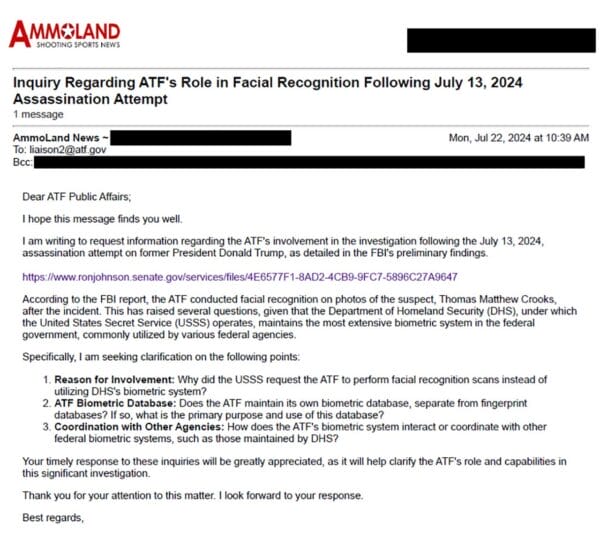
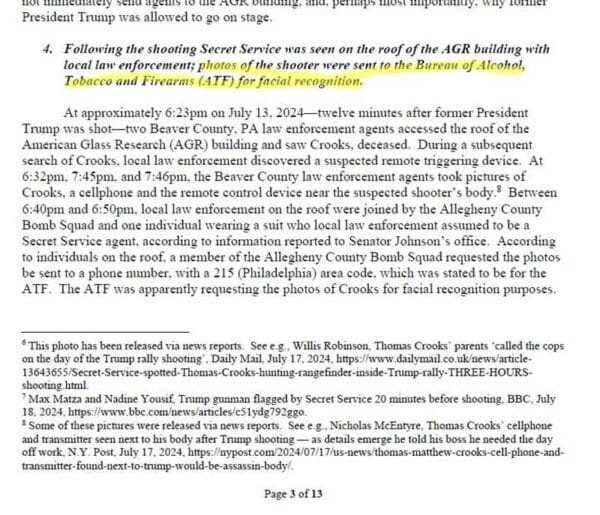
Facial Recognition Used in Assassination Attempt Investigation
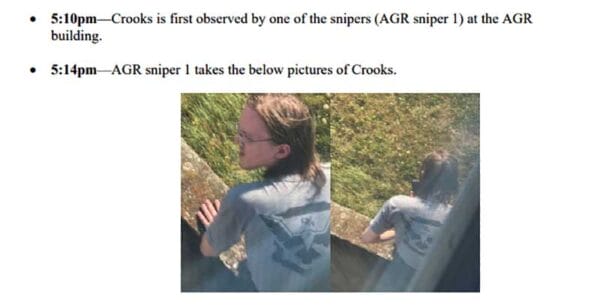
Following the July 13, 2024, shooting of Trump, law enforcement officers from Beaver County, PA, and the Allegheny County Bomb Squad took multiple photos of Crooks, his cellphone, and a suspected remote-triggering device. According to reports, these images were sent to a phone number associated with the ATF in Philadelphia for facial recognition purposes.
The ATF’s involvement has raised red flags, given that biometric identifications typically fall under the Department of Homeland Security (DHS) and the U.S. Secret Service.
Why was the ATF tasked with identifying the shooter using facial recognition technology? Critics argue that if the ATF can analyze a suspected assassin’s face in a high-profile case, they could easily use the same technology to track and target law-abiding gun owners.
Precedent Set in New Jersey
The ATF is not the only agency accused of misusing facial recognition technology to track firearm owners. In New Jersey, where gun control laws are among the strictest in the country, state officials used Clearview AI to cross-reference suspects’ faces with gun registration databases. Attorney General Gurbir Grewal later banned the use of Clearview AI, citing concerns that it was “racially biased and inaccurate.”
This case, however, proves that the technology already exists and has been used to identify legal gun owners. GOA has warned that the ATF could combine facial recognition databases with its nearly 1 billion firearm transaction records, creating a de facto national gun registry.
A National Gun Registry by Another Name?
For years, gun rights advocates have warned that the ATF has been illegally compiling a digital gun owner registry. While the agency insists its database is “not searchable by name”, critics argue that facial recognition technology could allow federal agents to bypass this limitation and instantly identify firearm purchasers.
The Senate is currently debating funding for “Law Enforcement Advanced Analytics,” a vague term that GOA believes could be used to finance ATF’s expansion of facial recognition programs. If passed, this funding could provide the ATF with the tools to monitor and track law-abiding gun owners on an unprecedented scale.
Call to Action
Gun rights organizations, including GOA, are urging Americans to contact their representatives in Congress and demand that no funding be allocated for the ATF’s facial recognition programs. Critics argue that allowing the ATF to merge biometric tracking with gun purchase records is a direct violation of the Second Amendment and an overreach of federal power.
As concerns mount over the ATF’s role in facial recognition surveillance, gun owners and civil liberties groups alike are warning that this technology could be used to enforce unconstitutional gun control measures and pave the way for future firearm confiscation.
The fight over government surveillance of gun owners is far from over, and the latest revelations about the ATF’s involvement only add fuel to the fire.
The question remains: How far will federal agencies go to track law-abiding Americans?
Live Inventory Price Checker
 |
Rogue Neck Gaiter Face Mask | 3V Gear | $ 14.95 $ 11.95 | |
 |
My Medic(R) Cloth Face Mask | My Medic | $ 4.95 $ 2.45 | |
| U.S. Made 3 Hole Knit Face Mask | Army Navy Outdoors | Army Navy Outdoors | $ 8.95 | ||
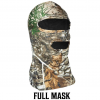 |
Primos PS6669 Stretch Fit Full Mask Realtree Edge Full Face Mask OSFA | BattleHawk Armory | $ 24.45 $ 14.06 |
Trump Survives Assassination Attempt, Shooter Neutralized at Rally
ATF Agent Caught Creating Illegal Gun Registry with Personal Cellphone
from https://ift.tt/6SoiIan
via IFTTT

No comments:
Post a Comment